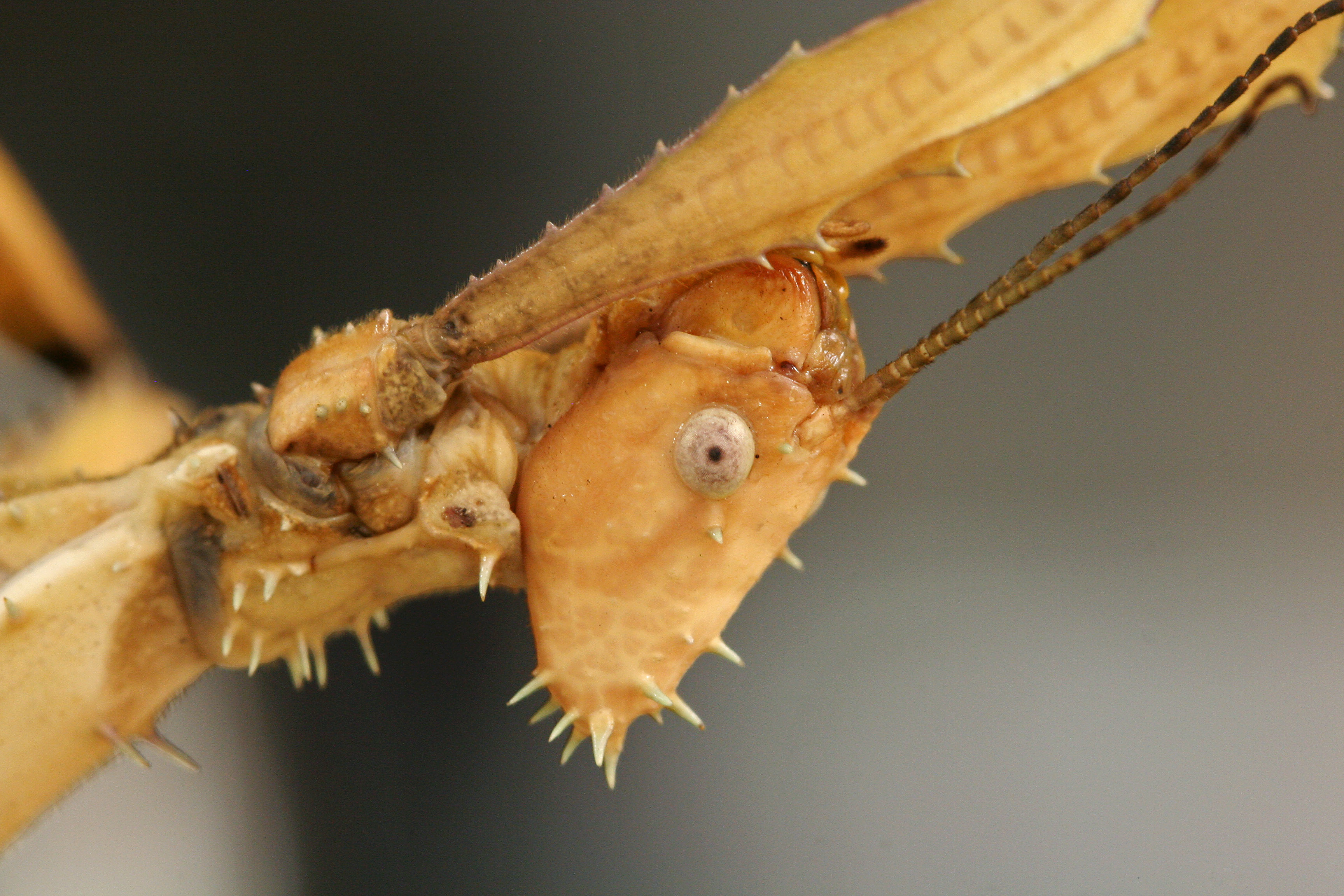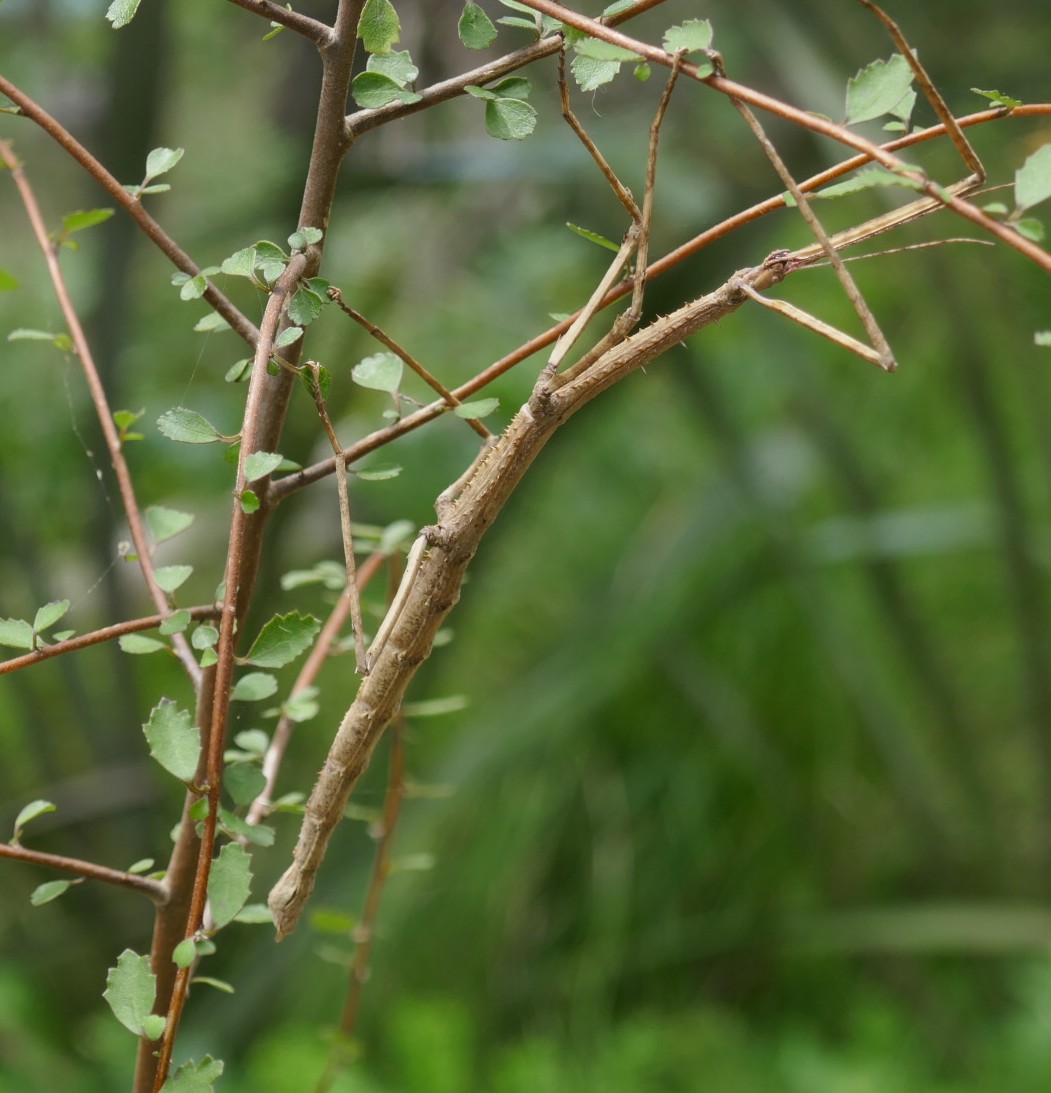|
Stick Mantis
Stick mantis and twig mantis are common names applied to numerous species of mantis that mimic sticks or twigs as camouflage. Often the name serves to identify entire genera such as is the case with: *''Brunneria'' (including Brunner's stick mantis, the Brazilian stick mantis and the small-winged stick mantis) *'' Hoplocorypha'' (the African stick mantises) *'' Paratoxodera'' (including the Borneo stick mantis and the giant Malaysian stick mantis) *''Popa'' ( African twig mantis) In cases, some but not all members of a genera are called by a variation of one of these names. For example: *'' Archimantis latistyla'' (Australian stick mantis) *'' Pseudovates peruviana'' (Peruvian stick mantis) Similar insects Stick mantises should not be confused with stick insects (Phasmatodea) although the latter were long-considered close relatives of all mantises according to classification which is now often considered paraphyletic and outdated. Likewise, both mantises and stick insects ... [...More Info...] [...Related Items...] OR: [Wikipedia] [Google] [Baidu] |
Hoplocorypha Macra
''Hoplocorypha macra'' is a species of praying mantis found in Angola, Kenya, Namibia, South Africa (Cape Province, KwaZulu-Natal Province, Natal, Transvaal Province, Transvaal), Tanzania, Uganda, and Zambia. Texas A&M University See also *List of mantis genera and species References Hoplocorypha Mantodea of Africa {{Hymenopodidae-stub ... [...More Info...] [...Related Items...] OR: [Wikipedia] [Google] [Baidu] |
Popa Spurca
''Popa spurca'', also known as the African twig mantis, is a species of mantis native to Africa. It takes its common name from its resemblance to twig from a woody plant and grows up to long if female or long if male. ''Popa spurca'' - Tree of Life See also *List of mantis genera and species *African mantis *Stick mantisReferences Mantidae Mantodea of Africa Insects described in 1856 {{Mantidae-stub ...[...More Info...] [...Related Items...] OR: [Wikipedia] [Google] [Baidu] |
Flower Mantis
Flower mantises are praying mantis species that use a special form of camouflage referred to as aggressive mimicry, which they not only use to attract prey, but avoid predators as well. These insects have specific colorations and behaviors that mimic flowers in their surrounding habitats. This strategy has been observed in other mantises including the stick mantis and dead-leaf mantis. The observed behavior of these mantises includes positioning themselves on a plant and either inserting themselves within the irradiance or on the foliage of the plants until a prey insect comes within range. Many species of flower mantises are popular as pets. The flower mantises are non-nocturnal group with a single ancestry (a clade), but the majority of the known species belong to family Hymenopodidea. Example species: Orchid mantis The orchid mantis, Hymenopus coronatus of southeast Asia mimics orchid flowers. There is no evidence that suggests that they mimic a specific orchid, but their ... [...More Info...] [...Related Items...] OR: [Wikipedia] [Google] [Baidu] |
Dead Leaf Mantis
Dead leaf mantis is a common name given to various species of praying mantis that mimic dead leaves. It is most often used in reference to species within genus ''Deroplatys'' because of their popularity as exotic pets. Examples include '' D. desiccata'' (giant dead leaf mantis), '' D. lobata'' (Southeast Asian dead leaf mantis), and '' D. philippinica'' (Philippines dead leaf mantis). Other species to which the term may apply include ''Acanthops falcataria'' (South American dead leaf mantis), '' A. falcata'' (South American dead leaf mantis), and ''Phyllocrania paradoxa'' (more common known as the ghost mantis). See also *Flower mantis *Leaf mantis *Shield mantis * Grass mantis * Stick mantis *''Acanthops'' *List of mantis genera and species The following list of mantis genera and species is based on the "Mantodea Species File", which is the primary reference for the taxonomy shown here. The insect Order (biology), order Mantodea consists of over 2,400 species of mantises in ... [...More Info...] [...Related Items...] OR: [Wikipedia] [Google] [Baidu] |
Grass Mantis
Grass mantis is a common name mostly given to various species of praying mantis that mimic grass or other slender vegetation. Species to which this name has been applied include but are not limited to: *'' Glabromantis mexicana'' (Mexican grass mantis) *'' Odontomantis planiceps'' (grass mantis) *'' Oxyothespis dumonti'' (African grass mantis) *'' Thesprotia graminis'' (American grass mantis) *'' Schizocephala bicornis'' (Indian grass mantis) See also *Dead leaf mantis *Flower mantis *Stick mantis *List of mantis genera and species The following list of mantis genera and species is based on the "Mantodea Species File", which is the primary reference for the taxonomy shown here. The insect Order (biology), order Mantodea consists of over 2,400 species of mantises in about 460 ... References Mantodea Insect common names {{Mantodea-stub ... [...More Info...] [...Related Items...] OR: [Wikipedia] [Google] [Baidu] |
Paraphyletic
In taxonomy (general), taxonomy, a group is paraphyletic if it consists of the group's most recent common ancestor, last common ancestor and most of its descendants, excluding a few Monophyly, monophyletic subgroups. The group is said to be paraphyletic ''with respect to'' the excluded subgroups. In contrast, a monophyletic group (a clade) includes a common ancestor and ''all'' of its descendants. The terms are commonly used in phylogenetics (a subfield of biology) and in the tree model of historical linguistics. Paraphyletic groups are identified by a combination of Synapomorphy and apomorphy, synapomorphies and symplesiomorphy, symplesiomorphies. If many subgroups are missing from the named group, it is said to be polyparaphyletic. The term was coined by Willi Hennig to apply to well-known taxa like Reptilia (reptiles) which, as commonly named and traditionally defined, is paraphyletic with respect to mammals and birds. Reptilia contains the last common ancestor of reptiles a ... [...More Info...] [...Related Items...] OR: [Wikipedia] [Google] [Baidu] |
Taxonomy (biology)
In biology, taxonomy () is the scientific study of naming, defining ( circumscribing) and classifying groups of biological organisms based on shared characteristics. Organisms are grouped into taxa (singular: taxon) and these groups are given a taxonomic rank; groups of a given rank can be aggregated to form a more inclusive group of higher rank, thus creating a taxonomic hierarchy. The principal ranks in modern use are domain, kingdom, phylum (''division'' is sometimes used in botany in place of ''phylum''), class, order, family, genus, and species. The Swedish botanist Carl Linnaeus is regarded as the founder of the current system of taxonomy, as he developed a ranked system known as Linnaean taxonomy for categorizing organisms and binomial nomenclature for naming organisms. With advances in the theory, data and analytical technology of biological systematics, the Linnaean system has transformed into a system of modern biological classification intended to reflect the evolu ... [...More Info...] [...Related Items...] OR: [Wikipedia] [Google] [Baidu] |
Phasmatodea
The Phasmatodea (also known as Phasmida, Phasmatoptera or Spectra) are an order of insects whose members are variously known as stick insects, stick-bugs, walking sticks, stick animals, or bug sticks. They are also occasionally referred to as Devil's darning needles, although this name is shared by both dragonflies and crane flies. They can be generally referred to as phasmatodeans, phasmids, or ghost insects, with phasmids in the family Phylliidae called leaf insects, leaf-bugs, walking leaves, or bug leaves. The group's name is derived from the Ancient Greek ', meaning an apparition or phantom, referring to their resemblance to vegetation while in fact being animals. Their natural camouflage makes them difficult for predators to detect; still, many species have one of several secondary lines of defense in the form of startle displays, spines or toxic secretions. Stick insects from the genera ''Phryganistria'', ''Ctenomorpha'', and ''Phobaeticus'' include the world's longe ... [...More Info...] [...Related Items...] OR: [Wikipedia] [Google] [Baidu] |
Stick Insect
The Phasmatodea (also known as Phasmida, Phasmatoptera or Spectra) are an order of insects whose members are variously known as stick insects, stick-bugs, walking sticks, stick animals, or bug sticks. They are also occasionally referred to as Devil's darning needles, although this name is shared by both dragonflies and crane flies. They can be generally referred to as phasmatodeans, phasmids, or ghost insects, with phasmids in the family Phylliidae called leaf insects, leaf-bugs, walking leaves, or bug leaves. The group's name is derived from the Ancient Greek ', meaning an apparition or phantom, referring to their resemblance to vegetation while in fact being animals. Their natural camouflage makes them difficult for predators to detect; still, many species have one of several secondary lines of defense in the form of startle displays, spines or toxic secretions. Stick insects from the genera ''Phryganistria'', ''Ctenomorpha'', and ''Phobaeticus'' include the world's long ... [...More Info...] [...Related Items...] OR: [Wikipedia] [Google] [Baidu] |
Argosarchus Horridus By George Vernon Hudson
''Argosarchus'' is a monotypic genus in the family Phasmatidae containing the single species ''Argosarchus horridus'', or the New Zealand bristly stick insect, a stick insect endemic to New Zealand (''Argosarchus spiniger'' is now considered a junior synonym of ''A. horridus''). The name "''horridus''" means bristly in Latin, likely referring to its spiny thorax. Description Females can reach up to (but are usually 12–15 cm), making this endemic species the longest New Zealand insect. A distinguishing feature is the coxa of the two forelegs is purple or pink. Females are much larger than males and have a visibly spiny thorax. Males are much skinnier and shorter, usually up to . The colour of ''A. horridus'' ranges from pale white to dark brown, with females usually being grey and males being a dark greenish-brown or dark brown. Life cycle and mating behaviour Like many other New Zealand stick insects, ''A. horridus'' is facultatively parthenogenetic. Because of th ... [...More Info...] [...Related Items...] OR: [Wikipedia] [Google] [Baidu] |
Pseudovates Peruviana
''Pseudovates peruviana'', common name Peruvian stick mantis, is a medium-sized species of praying mantis endemic to Peru. It takes its name from its slender, twig-like body, often dark brown in coloration, with two dark markings on its wings. Females can also have green forewings, mottled to mimic dying leaves." MantidForum.net This species, like many other mantids, can be kept as a pet. See also *Stick mantis *List of mantis genera and species The following list of mantis genera and species is based on the "Mantodea Species File", which is the primary reference for the taxonomy shown here. The insect Order (biology), order Mantodea consists of over 2,400 species of mantises in about 460 ... References Mantidae Mantodea of South America {{Mantidae-stub ... [...More Info...] [...Related Items...] OR: [Wikipedia] [Google] [Baidu] |

.jpg)



